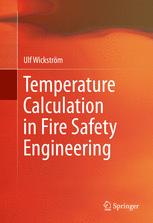

Most ebook files are in PDF format, so you can easily read them using various software such as Foxit Reader or directly on the Google Chrome browser.
Some ebook files are released by publishers in other formats such as .awz, .mobi, .epub, .fb2, etc. You may need to install specific software to read these formats on mobile/PC, such as Calibre.
Please read the tutorial at this link: https://ebookbell.com/faq
We offer FREE conversion to the popular formats you request; however, this may take some time. Therefore, right after payment, please email us, and we will try to provide the service as quickly as possible.
For some exceptional file formats or broken links (if any), please refrain from opening any disputes. Instead, email us first, and we will try to assist within a maximum of 6 hours.
EbookBell Team

0.0
0 reviewsThis book provides a consistent scientific background to engineering calculation methods applicable to analyses of materials reaction-to-fire, as well as fire resistance of structures. Several new and unique formulas and diagrams which facilitate calculations are presented. It focuses on problems involving high temperature conditions and, in particular, defines boundary conditions in a suitable way for calculations. A large portion of the book is devoted to boundary conditions and measurements of thermal exposure by radiation and convection. The concepts and theories of adiabatic surface temperature and measurements of temperature with plate thermometers are thoroughly explained.Also presented is a renewed method for modeling compartment fires, with the resulting simple and accurate prediction tools for both pre- and post-flashover fires. The final chapters deal with temperature calculations in steel, concrete and timber structures exposed to standard time-temperature fire curves. Useful temperature calculation tools are included, and several examples demonstrate how the finite element code TASEF can be used to calculate temperature in various configurations. Temperature Calculation in Fire Safety Engineering is intended for researchers, students, teachers, and consultants in fire safety engineering. It is also suitable for others interested in analyzing and understanding fire, fire dynamics, and temperature development. Review questions and exercises are provided for instructor use.